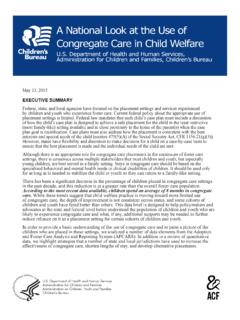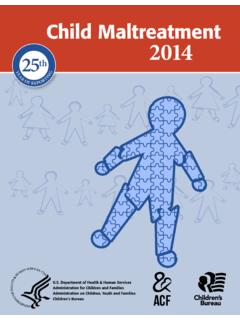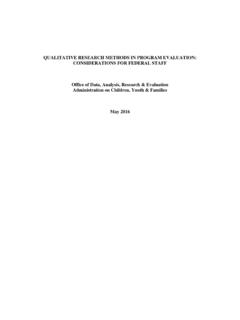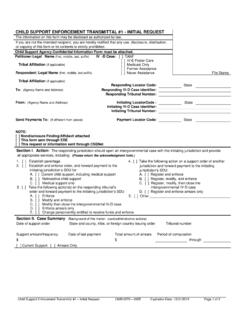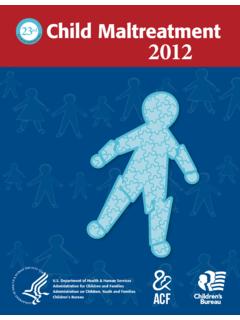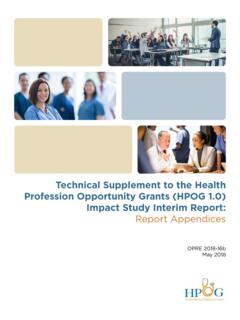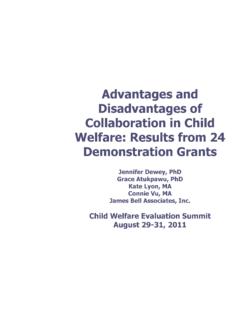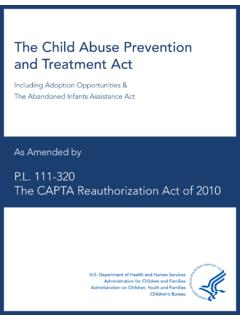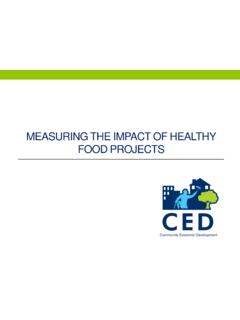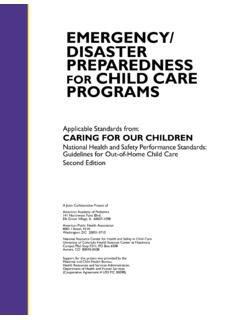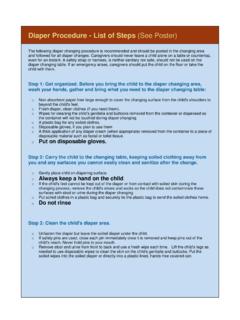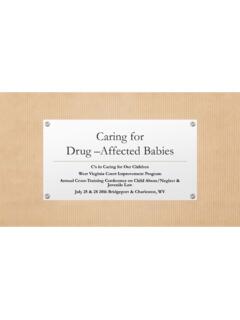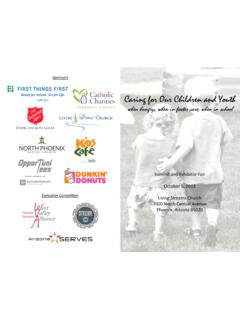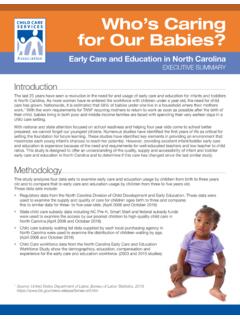Transcription of Transcript-Caring for Our Children Basics Webinar
1 1 caring for Our Children Basics Webinar February 10, 2015 Tricia Haley: A few announcements and then we will get started. First of all, as you have likely seen, all of the lines are muted on this call. It s so that we can avoid background noise and other kinds of disruptions. It is not because we don t want to hear your questions, we absolutely do. Feel free to chat them to us throughout the course of the Webinar . We ll be watching them as they come in, but then Linda and Moniquin will be answering the ones that they can get to at the end of the Webinar . Finally, we always, always, always get the question of whether or not these slides are available; they are not yet, but they will be.
2 We actually plan to archive this entire Webinar , including the slides, and when we have that up, we will send it your way. And with that, I will turn it over to Linda Smith, the deputy assistant secretary for early childhood development at the Administration for Children and Families (ACF). Linda Smith: And thank you. Thank you every one for joining today. This is actually a nice day for us here. This is a project that we ve been working on for a long time. We re very excited to do the briefing for you and then take some questions on it, and hopefully can encourage you, if you haven t already, to make comments to the standards in the Federal Register.
3 The purpose of the Webinar today is to ensure that all of our State partners have information on what the caring for Our Children Basics is really all about; how we developed them, look at the standards across the different domains, the way that we can use them to align programs across, and as those of you who heard me talk, talk about this horizontal alignment of our program from child care Head Start prekindergarten (HS preK) across the board; and then, obviously, answer some questions for you. So the next slide just shows you the goals of the early childhood program here at ACF.
4 I m not going to spend a lot of time on them, but just quickly. Obviously, we ve talked about building the early learning systems across these different domains, and this is, again, a point of these standards and the work we re doing. How we are promoting high-quality accountable programs for all of our Children , looking at the workforce, and there are references in the standards for some of the workforce requirements. Promoting family engagement, and then obviously the focus of this one is on improving health and safety in all of our early learning programs.
5 So these are sort of philosophical issues, but it is our belief here that, and obviously I think probably everyone on this call, that high quality does have significant benefits for our Children ; and that quite the opposite, poor-quality results and unsafe quality has a disregard for Children s physical and emotional safety and well-being, especially leading to some of the things that you show there. caring for Our Children Basics Webinar , 2/10/15 2 So we basically feel that health and safety is a foundation for what we re trying to do here. Survey after survey, the latest a couple years ago, shows that when parents are out looking for programs that they prioritize health and safety above all other quality features when selecting a child care arrangement, so it s very important to parents.
6 Sometimes I think parents have been fooled into thinking certain things are going on in programs that in fact are not when it comes to health and safety. And we ll talk a little bit about why we think this answers some of those questions. The next slide just gives you some of the issues that we think have been out there, that there s great variability between health and safety standards among the States and across jurisdictions and across programs. We know that here between HS and child care, we ll talk about that a little bit more later on. There is no Federal guidance that supports States in this.
7 We certainly have invested a lot in the caring for Our Children book. We ve done that work with our partners over at the Maternal and Child Health Bureau (MCHB) and throughout a number of agencies here in the government. But if you look at that book, and we do all the time; we go to it as a reference book for almost everything we do here, we also recognize that it can be a little overwhelming to a provider out there; that it s more like a telephone book than it is a handy, dandy, little guide for some of the basic things. So when we started this work, we wanted to recognize the fact that we wanted to put something out there that we thought would be the minimum that all programs could and should share, when it comes to the health and safety of Children .
8 We ve taken a look at these in a number of ways, and I want to just back up and say that States have taken many actions over the last several years to improve health and safety requirements in child care programs. In center-based programs in particular, you see 27 States have made changes to their licensing regulations, and more than half, have made changes to their family child care home standard. So there has been an increase. Noteworthy is that the largest increase was in the number of States that are requiring safe sleep practices, but there sure are a number of things that we would like to see all States include in their basic standards.
9 So I think we ve made a lot of progress. The States have worked really hard on this over the last several years, but there is more work that needs to be done. So we decided here, and this has been in the works now for a couple of years, actually, here at ACF, to look at developing a set of voluntary, what we call model or standards that the States could look at and that would provide a baseline, a foundation, the minimum, if you will, or the floor for early care and education across all programs. And I think I need to keep stressing that, and we stress it in the preamble to the standards that were in the Federal Register; we view these standards as very basic.
10 What we wanted to make sure that we pass the sniff test on these things, or the laugh test, whichever one you want to call it, in terms of people saying, you ve got to be kidding me, you re caring for Our Children Basics Webinar , 2/10/15 3 asking for, and there s been over time many laughable things that don t make sense to parents, that don t make sense to legislators. So we tried to go for the minimum, and that there wouldn t be anyone out there who could laugh at us for saying we want to require SIDS training, we want to require safe water practices when people have pools, those types of things, that no one would think they were unreasonable to ask for a child care program.
